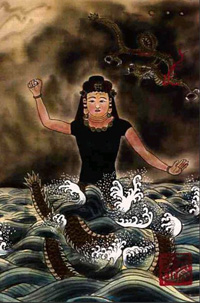Karate emerged in Okinawa in the 17th, 18th and 19th centuries, in response to the ruthless invasion and occupation of the island by the Japanese Satsuma samurai clan in 1609.
Refining and developing fighting techniques brought to the island by Chinese martial artists, merchants, sailors, and envoys, karate was practiced in secret until the late 1800s. The use of weapons had been banned, so the resourceful Okinawan karate practitioners turned their hands, feet, and farm implements into weapons. The art was developed to such a level that unarmed karate-ka (karate students) were able to defeat armed samurai in mortal combat.
Karate was cultivated in three cities: Naha (the present capital), Shuri (the royal capital), and Tomari (a small fishing village). Naha-te (Naha hands) eventually transformed itself into Gojuryu (Hard-Soft style). Shuri-te and Tomari-te merged to become Shorinryu (Shaolin style). The best techniques from Shorinryu and Gojuryu were combined to form Isshinryu in 1956, by its founder, Tatsuo Shimabuku.


